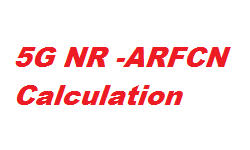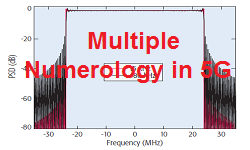5G NR Interview Questions for Layer 1
5G Interview Q&A
This blog post is for 5G NR interview questions and answers. These 5G interview questions are useful for 5G technical round to get 5G engineer position in Development or Quality Assurance.
Questions on 5G SSB?
- How to decide the SSB pattern to use?
- How to obtain SSB index?
- How to decide the periodicity of the SSB burst set?
- What are the periodicity of SSB?
- SSB periodically can be transmitted 5ms, 10ms, 20ms, 40ms, 80ms or 160ms. A UE can assume a default periodicity of 20ms during initial cell search or idle mode mobility.
- What is the impact of shorter or longer SSB periodicity ?
- Shorter periodicity helps faster cell search
- Larger periodicity helps gNodeB to save power
- What is the difference of DMRS of SSB and PDSCH/PDCCH
- How UE locates the SSB in frequency domain
- How UE locates the SSB in time domain?
- Why the 6 bits of SFN are carried on MIB payload and rest 4 bits as L1 payload?
- How many RE are used for MIB, PSS and SSS?
- How UE decodes the DMRS to find MIB information
- How to determine the frequency location of Type0-PDCCH CSS CORESET?
Questions on 5G RACH?
- How to map SSBs to valid PRACH occasions?
- How UE decides on which SSB index to send RACH ?
- How to decide if a PRACH occasion is valid?
- How UE decides the guard time of each PRACH format?
- Why we need to use different PRACH format?
- How to UE decides how to RBs to use to send PRACH ?
- How UE decides the msg1-FDM?
- What is the difference between msg1-FDM 1 and 2?
- Why high speed flag is removed from PRACH configuration info in 5G ( it was present in 4G) ?
- When to transmit PRACH after PDCCH order?
- What happens if PRACH collides with PUSCH/PUCCH/SRS?
- How to calculate the cell radius from PRACH format?
- What is the impact of sub carrier spacing on PRACH Slot?
- Question- What is a code block and why we need it, why we can not work with Transport block in 5G?
- Answer: In 5G NR, one MAC PDU goes into one Transport Block (TB). MAC does TB retransmissions but the problem in 5G NR is that a TB can be as big as 1,277,992 bits. Retransmitting the entire TB when only a few bits are in error wastes radio resources. For this reason 5G NR has the concept of Code Block (CB) and Code Block Group (CBG).
- A TB along with its CRC is broken up into smaller units called Code Blocks.
- A CB has a maximum size of 8448 bits. Each CB is protected with its own CRC. However, sending ACK/NACK for each code block can result in excessive signaling.
- For this reason, 2/4/6/8 code blocks are grouped into a Code Block Group. Only CBGs are retransmitted, not the entire TB. Even the feedback signaling is based on CBGs and not on CBs.
- A TB can have only one CBG, which in turn may have one or more CBs. It’s also possible for a TB to have multiple CBGs with only one CB per CBG.
- Answer: In 5G NR, one MAC PDU goes into one Transport Block (TB). MAC does TB retransmissions but the problem in 5G NR is that a TB can be as big as 1,277,992 bits. Retransmitting the entire TB when only a few bits are in error wastes radio resources. For this reason 5G NR has the concept of Code Block (CB) and Code Block Group (CBG).
- Question – What PDSCH mapping type A and type B?
- Ans – Link
- Question- What is the different 3GPP specification for 5G Layer 1 ?
- Ans –
- TS 38.211 – Physical Layer Channel and Modulation
- TS 38.212 Multiplexing and channel coding
- TS 38.213 Physical Layer Procedures for control
- TS 38.214 Physical Layer Procedure for data
- TS 38.215 Physical Layer Measurements

- Ans –
Author
Amlan Mishra
Amlan is a RAN product specialist active in the industry roles including device testing and functional testing.
you may reach out him at LinkedIn:https://www.linkedin.com/in/amlan-mishra-62613089/
Related Posts
- 5G NR Layer 3- RRC Interview Question
- 5G NAS (Non-Access Stratum) Interview Question
- Top 200 Latest Linux Interview Questions Answers




